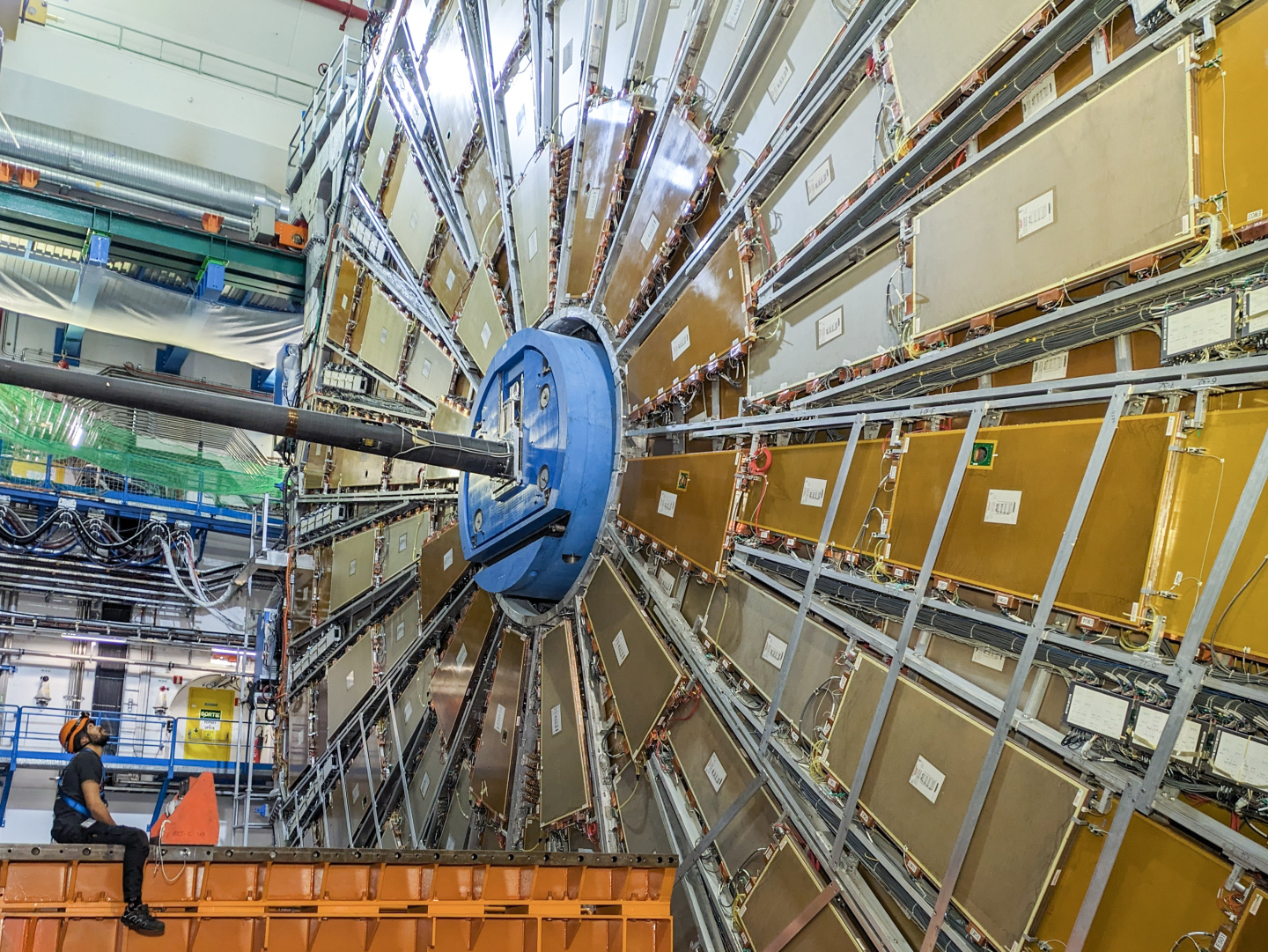
The ATLAS detector (Image: CERN)
In a talk at the ongoing Rencontres de Moriond conference, the ATLAS collaboration presented the result of its latest test of a key principle of the Standard Model of particle physics known as lepton flavour universality. The precision of the result is the best yet achieved by a single experiment in decays of the W boson and surpasses that of the current experimental average.
Most elementary particles can be classed into groups or families with similar properties. For example, the lepton family includes the electron, which forms the negatively charged cloud of particles surrounding the nucleus in every atom, the muon, a heavier particle found in cosmic rays, and the tau-lepton, an even heavier short-lived particle only seen in high-energy particle interactions.
As far as physicists know, the only difference between these particles is their mass, as generated through their different strengths of interaction with the fundamental field associated with the Higgs boson. In particular, a remarkable feature of the Standard Model is that each lepton type, or "flavour", is equally likely to interact with a W boson, the electrically charged carrier of the weak force that is one of the four fundamental forces of nature. This principle is known as lepton flavour universality.
High-precision tests of lepton flavour universality, as obtained by comparing the rates of decay of the W boson into an electron and an electron neutrino, into a muon and a muon neutrino or into a tau-lepton and a tau neutrino, are therefore sensitive probes of physics beyond the Standard Model. Indeed, if lepton flavour universality holds, these decay rates should be equal (within negligible mass-dependent corrections).
This can be tested by measuring the ratios of the W boson's rates of decay into the different lepton flavours. One of the challenges associated with such measurements at the Large Hadron Collider (LHC) is the collection of a pure ("unbiased") sample of W bosons. In a paper released by Nature Physics in 2021, ATLAS reported the world's most precise measurement of the ratio of the W boson's rate of decay into a tau-lepton versus its rate of decay into a muon, demonstrating that collision events in which a pair of top quarks is produced provide an abundant and clean sample of W bosons.
In a recent paper, ATLAS released a new measurement, this time addressing the ratio of the W boson's rate of decay into a muon versus its rate of decay into an electron. While the combination of all previous measurements showed that this ratio is within about 0.6% of unity, corresponding to equal decay rates, there was still room for improvement.
The new ATLAS result is based on a study of its full dataset from the second run of the LHC, collected between 2015 and 2018. The analysis looked at over 100 million top-quark-pair collision events. The top quark decays promptly into a W boson and a bottom quark, so this sample provides 100 million pairs of W bosons. By counting the number of these events with two electrons (and no muon) or two muons (and no electron), physicists can test whether the W boson decays more often into an electron or a muon.
However, it's not that simple. The Z boson, the electrically neutral carrier of the weak force, can also decay into a pair of electrons or muons, leaving a similar experimental signature to that of a top-quark pair. Since the combined mass of the leptons in Z-boson events clusters around the Z-boson mass of 91 GeV, this background process can be estimated and subtracted.
Moreover, as a result of measurements conducted in the 1990s at CERN's Large Electron-Positron (LEP) collider, the LHC's predecessor, and at the Stanford Linear Collider (SLC), the ratio of the Z boson's rate of decay into two muons versus its rate of decay into two electrons is known to be equal to unity within 0.3%. Thus, in this ATLAS analysis, the Z boson's decay rate ratio was determined as a reference measurement, allowing researchers to reduce uncertainties coming from the reconstruction of electrons and muons. Additionally, as many measurement uncertainties are similar in the events with two electrons and those with two muons, they were found to have only a minor effect on the measured decay rate ratio.
The final result from this new ATLAS analysis is a ratio of 0.9995, with an uncertainty of 0.0045, perfectly compatible with unity. With an uncertainty of only 0.45%, the result is more precise than all previous measurements combined (see figure below). For now, lepton flavour universality survives intact.







